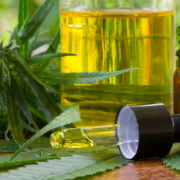Assessment of the Association of Cannabis on Female Sexual Function With the Female Sexual Function Index
Author:
Alex M. Kasman, MD, MS, Hriday P. Bhambhvani, BS, Genester Wilson-King, MD, and Michael L. Eisenberg, MD
Published in Science Direct
July 2020
Abstract
Introduction: Cannabis use has increased in the last decade, and the impact of cannabis on female sexual
function remains unclear.
Aim: To assess the impact of frequency of use, chemovar (tetrahydrocannabinol, cannabinol, or both) type, and method of consumption on female sexual function among cannabis users.
Methods: Adults who visited a single-partner cannabis dispensary’s locations were invited to participate in an uncompensated, anonymous online survey October 20, 2019 and March 12, 2020. The survey assessed baseline demographics, health status, cannabis use habits as well as used the validated Female Sexual Function Index (FSFI) to assess sexual function.
Main outcome measure: The main outcomes of this study are the total FSFI score (sexual dysfunction cutoff <26.55) and subdomain scores including desire, arousal, lubrication, orgasm, satisfaction, and pain.
Results: A total of 452 women responded with the majority between the ages of 30e49 years (54.7%) and in a relationship or married (81.6%). Of them,72.8% reported using cannabis more than 6 times per week, usually through smoking flower (46.7%). Women who reported more cannabis use, reported higher FSFI scores (29.0 vs 26.7 for lowest vs highest frequencies of reported use, P 1⁄4 .003). Moreover, an increase in cannabis use fre- quency by one additional use per week was associated with an increase in total FSFI (b 1⁄4 0.61, P 1⁄4 .0004) and subdomains including desire domain (P 1⁄4 .02), arousal domain (P 1⁄4 .0002), orgasm domain (P 1⁄4 .002), and satisfaction domain (P 1⁄4 .003). For each additional step of cannabis use intensity (ie, times per week), the odds of reporting female sexual dysfunction declined by 21% (odds ratio: 0.79, 95% confidence interval: 0.68e0.92, P 1⁄4 .002). Method of consumption of cannabis and chemovar type did not consistently impact FSFI scores or odds of sexual dysfunction.
Conclusion: Increased frequency of marijuana use is associated with improved sexual function among female users, whereas chemovar type, method of consumption, and reason for use does not impact outcomes.
Open Access
DOI: https://doi.org/10.1016/j.esxm.2020.06.009
Citation:
Kasman, A. M., Bhambhvani, H. P., Wilson-King, G., & Eisenberg, M. L. (2020). Assessment of the Association of Cannabis on Female Sexual Function With the Female Sexual Function Index. Sexual Medicine.


